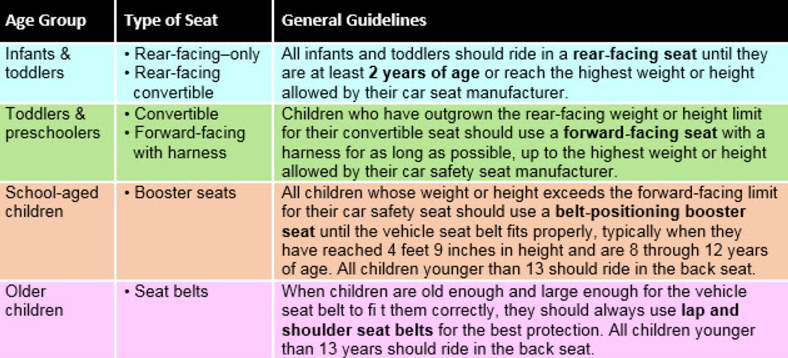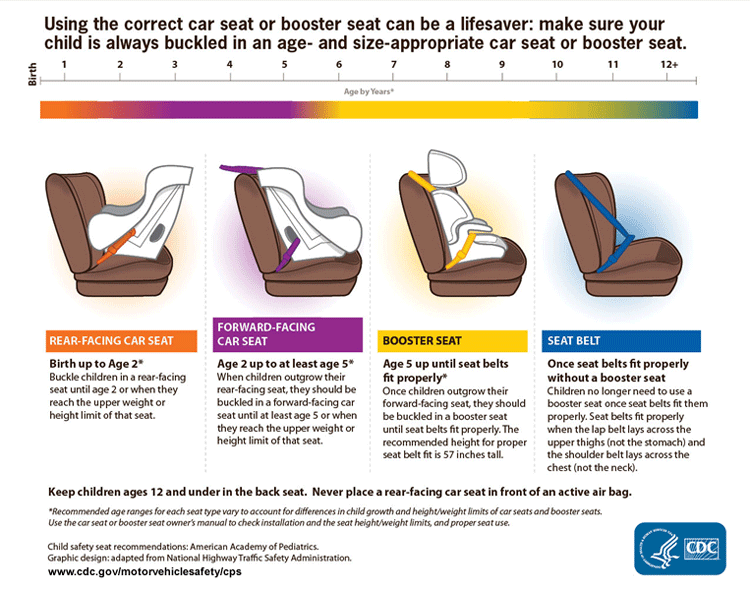|
Have a kid in a car seat?
The American Academy of Pediatrics updated its guidelines recently on car seat usage and safety. The CDC's updated guidelines are more concise and transparent, making life much easier for parents!
Here's what you need to know about the CDC's updated car seat guidelines:

1. All infants and toddlers should ride in a rear-facing seat until they are at least 2 years of age or, preferably, until they reach the highest weight or height allowed by their car seat manufacturer.
2. All toddlers and preschoolers should remain in a forward-facing convertible car seat with a five-point harness for as long as possible.
3. A child can move from a five-point harness to a booster when:
- He reaches the top weight or height allowed for his seat with a harness. (As defined in the manufacturer's instruction booklet).
- His shoulders are above the top harness slots.
- The tops of his ears have reached the top of the seat.
4. A child needs a belt-positioning booster seat until they surpass 4’9″ tall. (According to the AAP, most kids won’t fit safely in most vehicles without a booster until age 10 or 11).
5. All kids under age 13 belong in the back seat.

For more information, please visit the AAP's website.
Source: Car Safety Seats: A Guide for Families 2017/Copyright © 2017 American Academy of Pediatrics
Save
Tags : car seat safety, car seats, car insurance, insurance, AAP, new carseat guidelines
 August 09 at 8:00am · Share August 09 at 8:00am · Share
|